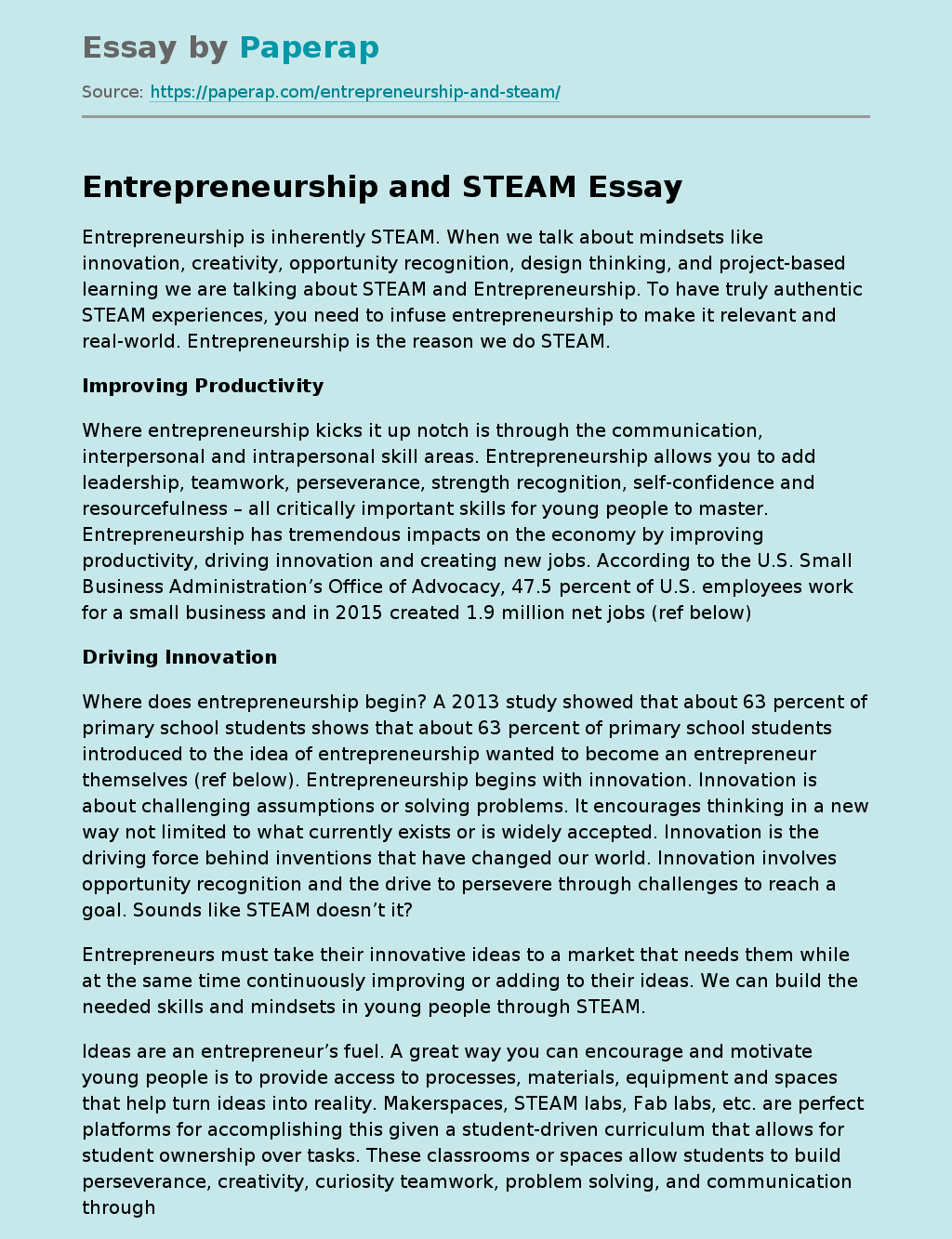Entrepreneurship and STEAM
Entrepreneurship is inherently STEAM. When we talk about mindsets like innovation, creativity, opportunity recognition, design thinking, and project-based learning we are talking about STEAM and Entrepreneurship. To have truly authentic STEAM experiences, you need to infuse entrepreneurship to make it relevant and real-world. Entrepreneurship is the reason we do STEAM.
Improving Productivity
Where entrepreneurship kicks it up notch is through the communication, interpersonal and intrapersonal skill areas. Entrepreneurship allows you to add leadership, teamwork, perseverance, strength recognition, self-confidence and resourcefulness – all critically important skills for young people to master.
Entrepreneurship has tremendous impacts on the economy by improving productivity, driving innovation and creating new jobs. According to the U.S. Small Business Administration’s Office of Advocacy, 47.5 percent of U.S. employees work for a small business and in 2015 created 1.9 million net jobs (ref below)
Driving Innovation
Where does entrepreneurship begin? A 2013 study showed that about 63 percent of primary school students shows that about 63 percent of primary school students introduced to the idea of entrepreneurship wanted to become an entrepreneur themselves (ref below).
Entrepreneurship begins with innovation. Innovation is about challenging assumptions or solving problems. It encourages thinking in a new way not limited to what currently exists or is widely accepted. Innovation is the driving force behind inventions that have changed our world. Innovation involves opportunity recognition and the drive to persevere through challenges to reach a goal. Sounds like STEAM doesn’t it?
Entrepreneurs must take their innovative ideas to a market that needs them while at the same time continuously improving or adding to their ideas.
We can build the needed skills and mindsets in young people through STEAM.
Ideas are an entrepreneur’s fuel. A great way you can encourage and motivate young people is to provide access to processes, materials, equipment and spaces that help turn ideas into reality. Makerspaces, STEAM labs, Fab labs, etc. are perfect platforms for accomplishing this given a student-driven curriculum that allows for student ownership over tasks. These classrooms or spaces allow students to build perseverance, creativity, curiosity teamwork, problem solving, and communication through hands-on experiences.
Based on a 2009 study, students who partake in hands-on activities, such as those presented in STEAM classrooms and makerspaces are more likely to grasp complex concepts than those who learn in more traditional learning environments (ref below).
Critical Concept
Failure is a critical concept in the STEAM and maker worlds because it is important for young people to understand that is okay to fail. When you fail, you have an opportunity to reflect on the failure, rethink the idea, and learn and grow from the experience. As humans we know we don’t usually do something perfectly the first time. It takes failure and practice and constant refinement of our craft. However, we do a terrible job of allowing for this in our public schools. By guiding young people to ask the right questions and solve real-world problems, teachers can help students understand that failure is a necessary step on the path to success.
In my opinion, STEAM is the first half of the equation. Give students opportunities to make, build, improve, fail, rethink, lead, persevere, seek opportunities, etc. However, STEAM is not necessarily authentic if entrepreneurship doesn’t play a role. The real-world relevant connection comes with the entrepreneurship piece of STEAM. This is where most STEAM programs fail. They give students challenging tasks, but are generally pre-defined, over structured and teacher-driven. If students are encouraged to seek out challenging problems and opportunities and work towards solving them to meet the needs of a market, well, that is STEAM and entrepreneurship at their best.
Entrepreneurship and STEAM. (2021, Nov 11). Retrieved from https://paperap.com/entrepreneurship-and-steam/

